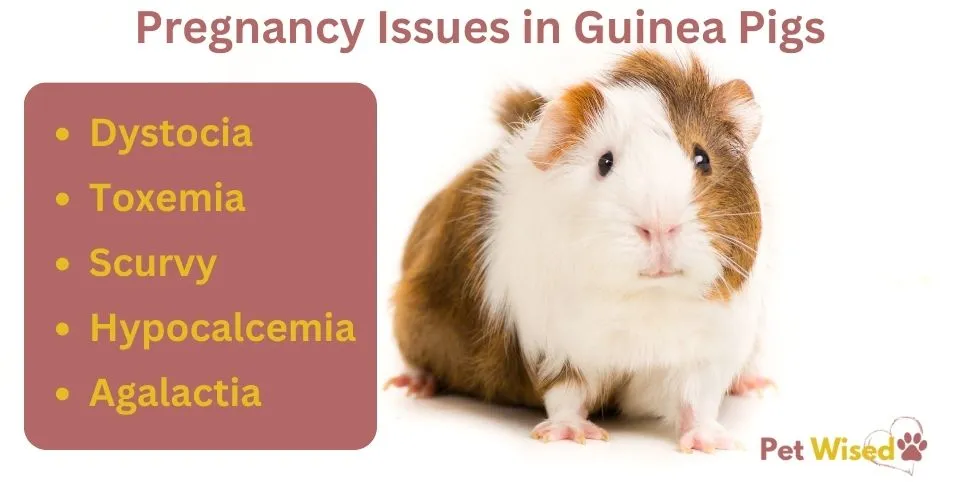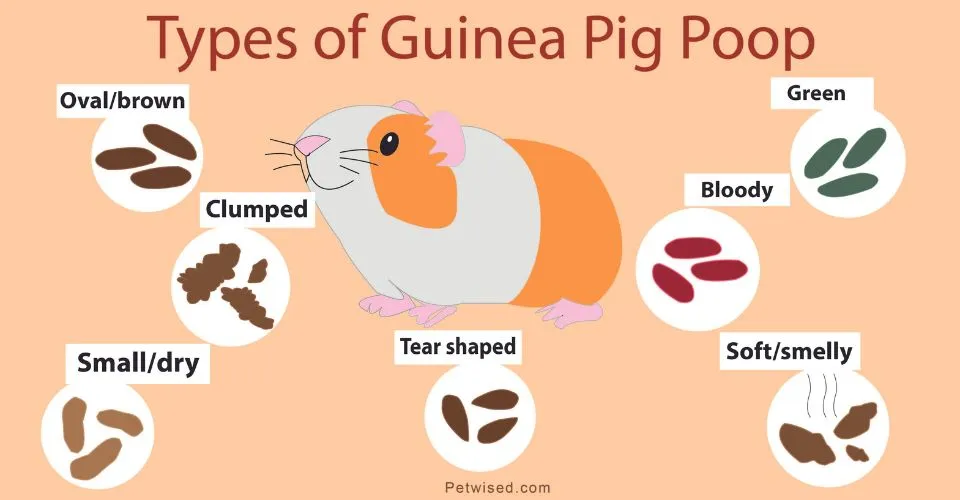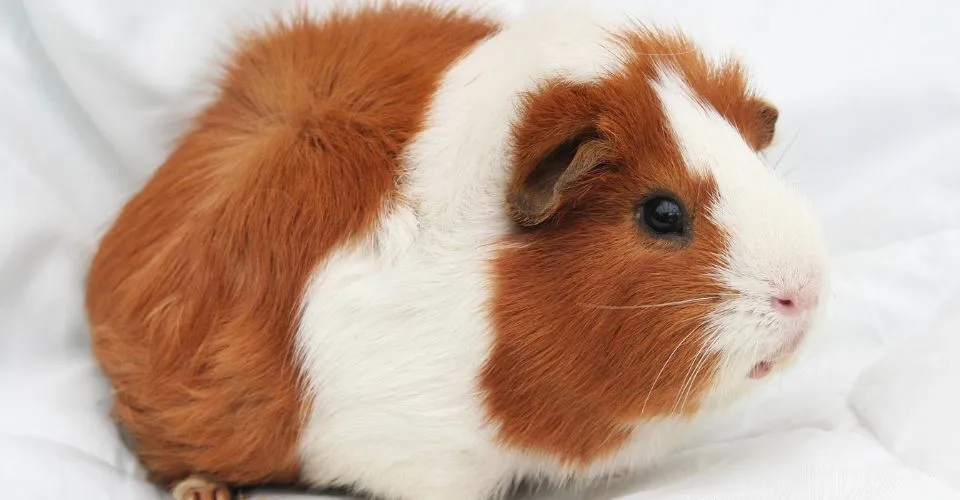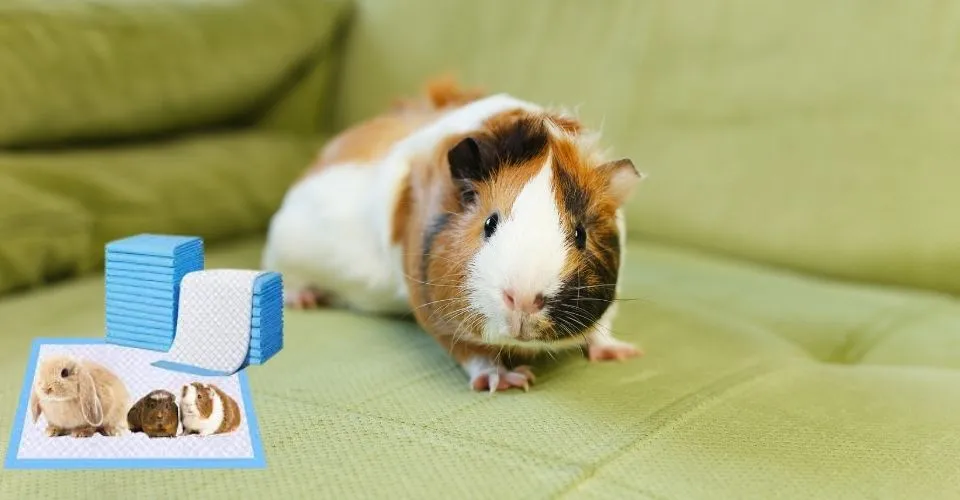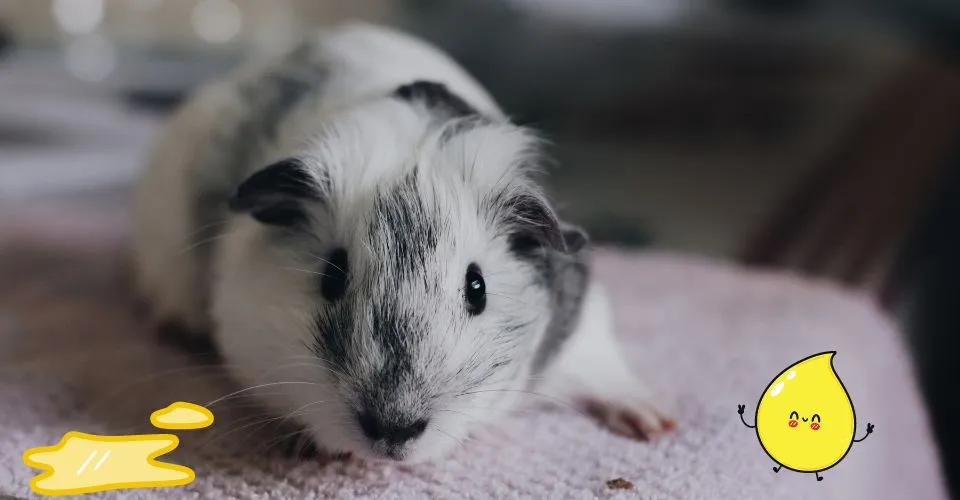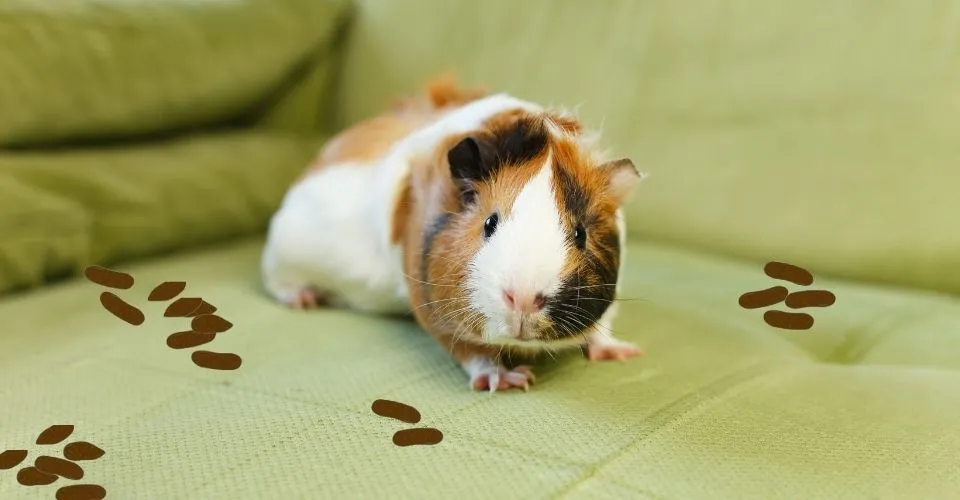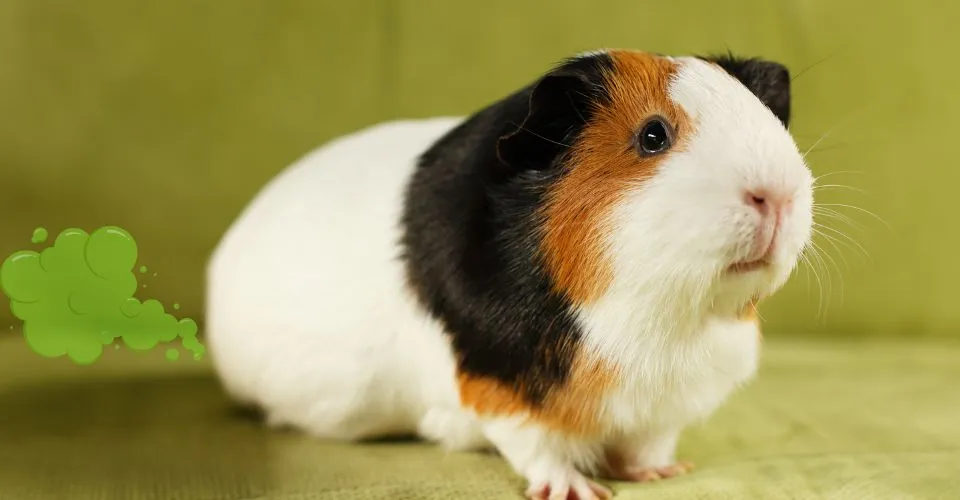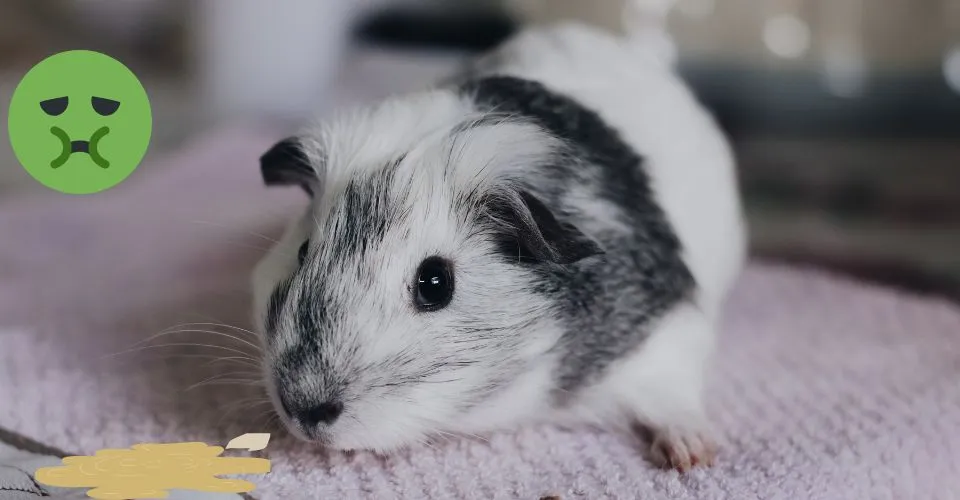Pregnancy is very difficult for guinea pigs. According to one Lakeshore Pet Hospital, around 20% of mothers die during birth. According to another source, around 25% of pregnancies lead to the demise of either the mama guinea pig or baby pup(s).
In this article, we explore the 5 most common guinea pig pregnancy issues with signs, causes, treatment, and prevention.
Common Pregnancy Issues in Guinea Pigs

Dystocia
Dystocia is the difficulty in giving birth. It is a very common clinical condition in old pregnant guinea pigs. In this condition, the fibrous cartilage, pelvic joint (symphysis), joining two pubic bones, fails to separate adequately to allow guinea pups to pass.
This is most common in first-time mama guinea pigs that are over seven to eight months old. Actually, as female guinea pigs age, the fibrous cartilage that binds the two pelvic bones stiffens, which limits the ability of pubic bones to spread enough to allow fetuses to pass.
In such cases, a cesarean section is the only way to bring baby guinea pigs into this world. But C-sections are very dangerous in guinea pigs and most mothers do not survive them.
To avoid dystocia, female guinea pigs should be first bred when they are between 4 to 8 months of age. The symphysis is most stretchable during this stage. On the other hand, you can avoid pregnancy altogether to avoid dystocia.
Signs and Symptoms of Dystocia in Guinea Pigs
Here are some of the common signs of dystocia in guinea pigs:
- Pain and discomfort
- Excessive vaginal/uterus bleeding
- Painful straining during labor without passing a fetus
- Labor has come to a halt—you can see the fetus in the vaginal canal but it is not coming out
- No babies after the passage of the expected delivery date
Causes of Dystocia in Guinea Pigs
Dystocia is mainly caused by the stiffening of fibrous cartilage that is joining the two pubic bones. It happens when:
- Sow is older than 7 to 8 months
- Sow has not given birth before
- Cartilage is stiffened, unable to spread
- No vaginal passage for the fetus to pass
Treatment and Management of Dystocia in Guinea Pigs
There is no treatment for dystocia in guinea pigs. There is no way to spread the vaginal passage for the fetus to pass. The only way to deliver pups in such cases is to perform a cesarean section. C-section is a very risky operation in guinea pigs and is usually not advocated as sows mostly do not survive. But given that there is no other way to deliver the pups, you will have to prepare yourself for a fatal outcome for your pregnant guinea pig.
How to Prevent Dystocia in Guinea Pigs?
Preventing dystocia in guinea pigs is easy. Either do not breed your guinea pig at all or do it between four to eight months of age. If your guinea pig is over 8 months old and has not had a litter before, you should not breed her. Get her spayed or pair her only with female guinea pigs or neutered male guinea pigs.
Guinea Pig Pregnancy Toxemia
Also known as ketosis, pregnancy toxemia is a very common issue in pregnant guinea pigs. It occurs when the guinea pig’s body produces ketone, a normal byproduct of metabolism, in excess—more than the guinea pig’s body can easily excrete or utilize as energy to maintain blood sugar level.
This usually occurs in the final 2 to 3 weeks of pregnancy and the first week after birth, when fetuses start taking up more energy than the mother can nutritionally supply. This leads to the production of too much ketosis in the mama guinea pig’s body.
Toxemia usually affects guinea pigs that are having their first or second litter. This is most common in guinea pigs with larger litter. The incidence of toxemia increases when guinea pig starts experiencing loss of appetite during the final stages of pregnancy. Besides that, obese guinea pigs are at a higher risk of developing toxemia as compared to lean guinea pigs.
While pregnant sows are at a higher risk of developing toxemia, obese guinea pigs, male or female, could also develop ketosis.
Signs and Symptoms of Toxemia in Guinea Pigs
Guinea pigs suffering from ketosis/toxemia mostly exhibit the following signs of sickness:
- Loss of appetite
- Loss of thirst
- Little to no drinking and eating
- Always low on energy
- Muscle spasms and clumsiness
- Coma, leading to death
While most guinea pigs show the above-mentioned signs when experiencing toxemia, it is pertinent to mention here that in some cases, the guinea pig may experience sudden death without showing any signs of sickness. In the case of pregnant guinea pigs, ketosis causes stillborn babies in the litter.
Causes of Toxemia in Guinea Pigs
Ketosis/toxemia in guinea pigs occurs due to the excessive production or pile-up of ketones in the guinea pig’s body. Some of the common underlying causes of ketosis are as follows:
- Loss of appetite, leading to low blood sugar level (to deal with low blood sugar level, the body breaks down fatty acids in the body, resulting in ketones to be used by the body as energy)
- Little to no exercise during the final week of pregnancy (resulting in build-up of unused ketone in the blood)
- Obesity
- Larger litter size
- Inexperienced sow
- Environmental stress (small cage, loud noises, over handling, etc.)
- Underdeveloped blood vessels in the uterus
Treatment and Management of Toxemia in Guinea Pigs
Toxemia is very fatal in guinea pigs and treatment mostly doe not work. However, to help a vet may prescribe medications like propylene glycol, calcium glutamate, or steroids.
If your guinea pig has survived the severe attack of Toxemia, you should consult your veterinarian for any special dietary requirements of your brave guinea pig.
How to Prevent the Risk of Toxemia in Guinea Pigs?
Just take good care of your pregnant guinea pig and she will never experience ketosis. Here is what you can do to prevent toxemia in your guinea pigs:
- High-quality food—pellets, and hay
- While pregnancy weight gain is okay, be cautious about your sow becoming obese
- Consult your vet and follow a feeding schedule to prevent ketone buildup in the body
- Provide a peaceful, stress-free environment
- No handling in the final weeks of pregnancy
Scurvy In Guinea Pigs
Guinea pigs are unable to make their own vitamin C and thus need it in their diet. Guinea pigs need around 10 to 50mg of vitamin C in their diet, depending on their condition. Where adult guinea pigs should get at least 10mg of vitamin C in their diet, juvenile and pregnant guinea pigs should get at least 20 to 30 mg of vitamin C in their diet each day.
So when a pregnant guinea pig does not get increased vitamin C in its diet, it runs develops vitamin C deficiency, making it vulnerable to scurvy. Scurvy will affect the guinea pig’s body’s ability to manufacture collagen, which is essential for bone and tissue formation.
Signs and Symptoms of Scurvy in Guinea Pigs
Guinea pigs suffering from a deficiency of vitamin C will exhibit the following signs f sickness:
- Reluctance and difficulty in walking (swollen joints)
- Poor coat health
- Anorexia accompanied by weight loss
- Diarrhea
- Blood clotting problem—excessive bleeding from wounds and slow healing
- Subcutaneous bleeding (spots visible under the skin)
- Internal bleeding
- Weakness and lethargy
- Little to no energy
- Frequent vocalization due to pain (squeaking and screaming)
Causes of Scurvy in Guinea Pigs
The main cause of scurvy in guinea pigs is the deficiency of vitamin C in the guinea pig’s diet. Juvenile, Nursing, and Pregnant guinea pigs required an increased amount of Vitamin C in their diet, so they are at a higher risk of developing scurvy.
Sometimes, guinea pigs may develop scurvy even if they are receiving ample vitamin C in their diet. This usually occurs when the guinea pig is ill and is not able to eat enough or its body is unable to properly absorb vitamin C from the diet that is being consumed.
Treatment and Management of Scurvy in Guinea Pigs
To treat scurvy in guinea pigs, vets recommend giving vitamin C supplements to the guinea pig on daily basis for about a week or two, depending on the level of vitamin C deficiency. Depending on the guinea pig’s condition, the vet will either suggest supplement intake from the mouth or injections administered by a veterinarian.
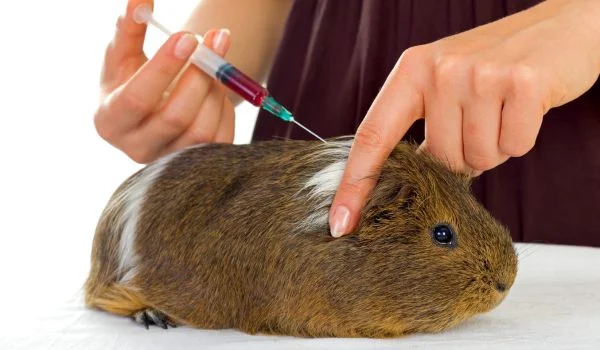
When your guinea pig is recovering from scurvy, you will have to closely monitor it and offer a vitamin C-rich diet, as suggested by your veterinarian. After discussing with your veterinarian, you may want to add some fresh fruits and veggies that are rich in vitamin C to your guinea pig’s diet.
A few such fruits and veggies that guinea pigs tend to devour include bell peppers, broccoli, spinach, dandelions, oranges, strawberries, lemon, etc.
| Multivitamins Are Risky! |
| Multivitamin tablets are mostly not recommended for guinea pigs as they have an added risk of causing an allergic reaction in guinea pigs. |
How to Prevent Scurvy in Guinea Pigs?
Scurvy is very common in guinea pigs because most guinea pig owners fail to meet their piggies’ demand for vitamin C. Therefore, it is crucial that as a responsible guinea pig owner, you take preventive measures to reduce the risk of scurvy in your guinea pig by ensuring that they are always getting ample vitamin C in their diet.
For adult guinea pigs you should ensure at least 10mg of vitamin C in the diet each day. And for juvenile, pregnant, and nursing guinea pigs, you should ensure around 30mg of vitamin C in their daily diet.
| Too Much Vitamin C Ain’t Good! |
| Too much vitamin C in the diet can create problems for guinea pigs as well. So try rotating or mixing vitamin C-rich fruits and veggies with those that have less of it. |
Hypocalcemia in Guinea Pigs
Hypocalcemia is yet another common guinea pig pregnancy issue. It happens when pregnant guinea pigs are not getting ample calcium in their diet and experience a low level of calcium in their blood (not bones).
Pregnant and nursing guinea pigs are at a higher risk of developing hypocalcemia because their bodies are consuming too much calcium—for the development of the fetal skeleton and secretion of milk to feed pups. Guinea pigs usually develop this kind of hypocalcemia soon after giving birth or a couple of weeks before birth.
Stressed, obese and guinea pigs that have had several litters are also more prone to calcium deficiency.
Thus, when they do not get increased calcium in their diet, they start exhibiting signs of calcium deficiency.
Signs and Symptoms of Hypocalcemia in Guinea Pigs
It usually occurs in the final two weeks of pregnancy or shortly after birth. So during this period, you should look out for the following signs:
- Depression
- Dehydration
- Loss of appetite
- Muscle spasms and tremors
- Sudden death if not addressed immediately
Causes of Hypocalcemia in Guinea Pigs
The main cause of hypocalcemia in pregnant guinea pigs is the increased demand for calcium, as the body needs it for developing fetal skeletons. So, when the increased demand for calcium from pregnant guinea pigs is not met, she develops a deficiency.
Treatment and Management of Calcium Deficiency in Guinea Pigs
Calcium deficiency can be easily addressed in pregnant guinea pigs by increasing the amount of calcium in the guinea pig’s diet, after consulting your veterinarian.
When recovering from hypocalcemia, you may want to feed a special diet to your guinea pig with calcium supplements. You should always consult your veterinarian about type and dosage, before giving any supplementation to your guinea pig as their excess can also be problematic
How to Prevent Hypocalcemia in Guinea Pigs?
Feed your guinea pig a balanced diet to prevent the risk of calcium deficiency. To juvenile, nursing, and pregnant guinea pigs, you should provide a calcium-rich diet.
Guinea Pig Pregnancy Agalactia
Agalactia is the shortage or lack of milk supply in an otherwise healthy lactating guinea pig. Not much research is available on the issue of Agalactia in guinea pigs, however, from the experience and knowledge available, I have gathered that, it usually occurs in guinea pigs that fail to consume afterbirth after delivering the pups.
Actually, it is the eating of afterbirth that kickstart the chemical process of milk production in the mammary glands of the mama guinea pig. So, when the mama guinea pig does not consume afterbirth after delivering the baby, she might experience the issue of lack of milk.
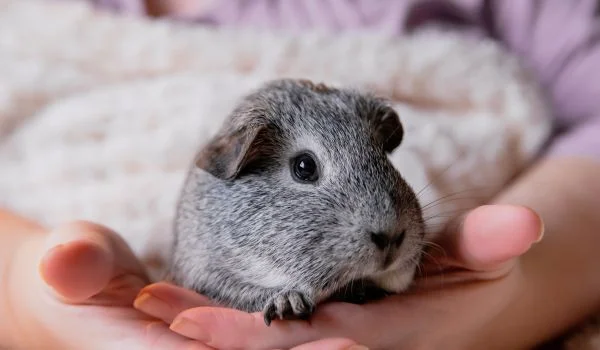
Mostly, mama guinea pigs that are lactating and concurrently pregnant, respond little to their pups’ calls—they do not produce milk for them as their bodies start preparing for the next litter that is growing inside of them.
If the mama guinea pig is suffering from agalactia or she has got pregnant again and not responding to pups’ calls, you will have to intervene and bottle feed the guinea pigs. Baby guinea pigs are born quite developed and usually start eating solid foods like moistened pellets within 2 days of birth. However, you will have to continue providing milk supplementation via a bottle or syringe, for about 3 to 4 weeks.
Mama guinea abandoning her pups might sound weird, but did you know mama guinea pigs often eat their babies?
